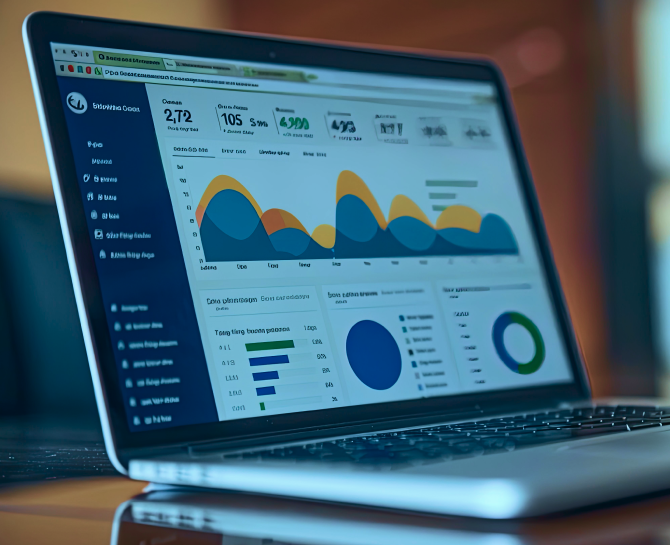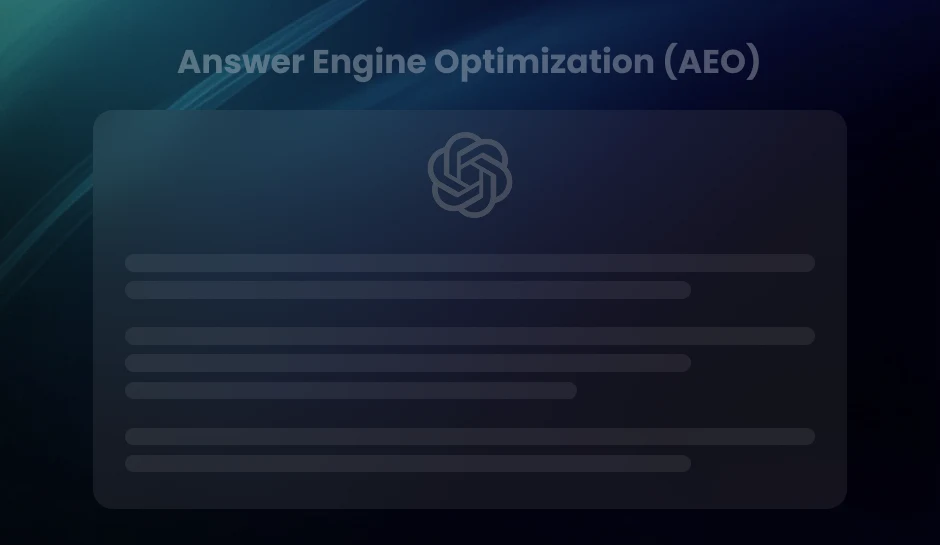
Why SEO Dashboard and Power BI Belong in Your Marketing Tech Stack
Struggling to report SEO performance across multiple tools? This article shows how using Power BI for your SEO dashboard can help unify data sources, deliver role-specific views, and automate updates. Whether you manage one site or multiple markets, you will learn how to scale SEO reporting with precision and purpose.
Data is everywhere, but clarity is rare.
Your SEO tools show rankings, impressions, and clicks. Your analytics platform tells a different story. Meanwhile, leadership asks for weekly updates, content teams need performance feedback, and you are stuck stitching together screenshots and spreadsheets.
Does this reporting routine feel familiar? Are you constantly juggling between platforms just to answer simple questions like “Which pages drove leads this quarter?” or “What impact did last month’s content update have?”
If so, it may be time to rethink how SEO fits into your marketing tech stack.
An SEO dashboard built in Power BI does more than organize data. It connects insights across platforms, streamlines stakeholder reporting, and turns scattered metrics into decisions that move the business forward.
In this blog, we will show why combining SEO dashboards with Power BI is not just a reporting upgrade. It is a strategic investment in how your marketing team works, collaborates, and grows.
The Growing Importance of SEO in Marketing Strategy
Organic search is no longer just a traffic channel. It is often the first point of contact between your brand and potential customers. Whether someone is researching a solution, comparing providers, or looking for expert content, your visibility in search results plays a direct role in shaping that journey.
That is why SEO has moved from the sidelines to the center of modern marketing. It influences brand awareness, content performance, lead generation, and even product positioning. But as its strategic value grows, so do the expectations.
Marketing teams are under pressure to prove impact, align with revenue goals, and respond faster to changing search trends. Yet many still rely on fragmented tools that provide isolated data points rather than complete, actionable insights. One tool shows keyword rankings. Another shows engagement metrics. A third holds conversion data. By the time it is all stitched together, the window to act may have already closed.
What Makes Power BI a Strong Fit for SEO Dashboards
Power BI offers what most SEO reporting tools cannot: flexibility, integration, and scalability. These qualities are essential for marketing teams that need to track performance across multiple sources and make informed decisions quickly.
SEO data often comes from tools like Google Search Console, GA4, and Ahrefs. Viewing each in isolation can slow down analysis and lead to missed insights. Power BI brings everything together into one place, allowing you to monitor rankings, traffic, conversions, and technical health in a unified dashboard.
The platform also supports different roles across the team. Analysts can drill into keyword performance or site errors, while leadership can access simplified views tied to business goals. There is no need to build different reports for each audience. Power BI allows you to control what data each stakeholder sees without duplicating effort.
Automation is another key advantage. With scheduled refreshes, live data connections, and cross-platform compatibility, Power BI removes the need for manual updates. This not only saves time but also improves accuracy and consistency across reporting.
For teams that want more than just static charts or weekly exports, Power BI delivers a complete solution. It turns SEO data into clear, accessible insights that support faster decisions and better outcomes.
Key Benefits of Using Power BI for SEO Dashboards
An SEO dashboard is only as good as the insights it delivers. Power BI enhances that value by helping teams move beyond static reports and fragmented tools toward a unified, flexible, and data-driven reporting environment. Here is how it delivers real advantages across your marketing workflow:
1. Centralized View of SEO Performance
Power BI allows you to bring together data from platforms like Google Search Console, GA4, Ahrefs, SEMrush, and even your CRM. Instead of switching between tools, teams can access a single dashboard that shows everything from keyword performance to conversions and revenue contribution. This unified view reduces data silos and helps align SEO with overall marketing strategy.
2. Custom Dashboards for Every Team Member
Different stakeholders care about different outcomes. With Power BI, you can create role-specific dashboards that present only the most relevant metrics. SEO specialists can drill into crawl errors and keyword shifts, content teams can track engagement by page, and executives can view high-level organic trends tied to business goals. This makes SEO reporting more relevant, actionable, and aligned across the organization.
3. Faster, More Confident Decision-Making
When SEO performance is clearly visualized and updated in near real time, teams can respond quickly. Power BI’s interactive features let users filter by date, channel, region, or content type to identify what is working and what is not. This allows for rapid iteration on content, technical fixes, and campaign direction, supported by data rather than guesswork.
4. Automation and Scheduled Updates
Manually pulling data from multiple tools every week is not scalable. Power BI supports automated data refreshes, so your dashboards stay current without any extra effort. This reduces reporting delays, eliminates version control issues, and ensures stakeholders always have access to the latest insights.
5. Scalable Reporting Across Markets and Campaigns
Whether you are managing SEO for one website or multiple business units across regions, Power BI allows you to build scalable dashboards that grow with your needs. You can filter reports by brand, product line, country, or campaign, and track performance at both macro and micro levels without building new reports from scratch.
6. Integration With Broader Marketing and Sales Data
Power BI does not stop at SEO. It can connect with your entire tech stack, from paid media platforms to marketing automation and CRM tools. This makes it easier to measure how SEO contributes to pipeline, conversions, and revenue, creating a more complete picture of your marketing performance.
Pro Tip- To make the most of your Power BI SEO dashboard, define clear stakeholder roles and metrics before building. Align each dashboard tab with a specific business question, such as “Which keywords influenced conversions this month?” or “How is organic traffic contributing to pipeline by region?” This ensures the dashboard delivers answers, not just data.
How It Adds Value to the Marketing Tech Stack
Power BI strengthens your marketing tech stack by transforming SEO data into actionable insights, aligning siloed teams, and scaling analytics across business units. It does not just visualize metrics, it structures intelligence for performance-driven marketing.
1. Centralizes SEO and Marketing Data Across the Funnel
Modern marketing stacks include multiple platforms:
- Top-of-funnel tools like Google Search Console, GA4, SEMrush, and Ahrefs.
- Mid-funnel tools such as HubSpot, Marketo, and content platforms.
- Bottom-of-funnel systems like Salesforce, Zoho CRM, or Dynamics.
Without integration, each tool tells only part of the story. This fragmentation limits your ability to track a customer journey from discovery to conversion.
Power BI solves this by:
- Connecting APIs and data streams from all major marketing and analytics platforms.
- Enabling full-funnel visibility, from keyword entry to conversion outcome.
- Allowing unified reporting across teams, campaigns, and performance indicators.
Result: Your marketing team can work from a single, connected source of truth that reflects the actual impact of SEO within the broader customer lifecycle.
2.Aligns SEO Metrics With Revenue and ROI Goals
Many SEO tools focus on technical health or keyword rankings, but C-level stakeholders want to understand how SEO contributes to revenue and pipeline growth.
With Power BI, you can:
- Link organic traffic data to MQLs, SQLs, opportunities, and revenue stages.
- Measure page-level and content cluster performance based on lead quality, not just clicks.
- Surface long-tail keyword impact on form fills, demo requests, or eCommerce conversions.
- Quantify ROI by connecting SEO campaigns to cost data and revenue outcomes.
Result: SEO is no longer viewed as a background tactic. It becomes a measurable, revenue-aligned function in board-level reporting.
3.Delivers Custom, Role-Based Reporting Across Teams
Marketing is collaborative by nature, but reporting often isolates functions. SEO dashboards built in Power BI allow different departments to access tailored views without creating separate reports.
You can structure dashboards for:
- SEO and analytics teams:
- Content teams:
- Digital and performance marketers:
In-depth visibility into keyword movement, crawl errors, and ranking volatility.
Real-time insights into top-performing blog posts, content decay, and keyword gaps.
Channel comparisons between SEO, paid, and referral traffic.
Result: Each team works from the same data model but views it through the lens of their role, reducing friction, misalignment, and report duplication.
4.Increases Reporting Efficiency and Accuracy
Manual reporting workflows often include downloading CSVs, combining spreadsheets, building slide decks, and validating numbers, every week.
Power BI eliminates these steps by:
- Refreshing data automatically on a set schedule or live basis.
- Updating dashboards in real time for weekly, monthly, or quarterly reviews.
- Reducing human error through data validation and automation.
- Supporting alert logic for performance drops, threshold breaches, or anomalies.
Result: Marketing teams save hours per week while improving report reliability and responsiveness to data shifts.
5.Integrates SEO With Paid, Product, and Lifecycle Initiatives
SEO is not an isolated function. Its performance is linked to product updates, content strategy, lifecycle campaigns, and user experience.
Power BI enables these cross-functional connections by:
- Overlaying SEO metrics with paid ad performance to inform bid strategy and budget allocation.
- Helping product teams evaluate how feature launches impact search demand or rankings.
- Guiding lifecycle marketers to optimize nurture content for search visibility.
Result: Marketing becomes more coordinated, and SEO contributes to multi-channel growth and optimization efforts.
6.Scales Seamlessly With Evolving Tech and Team Structures
As your business grows, so does your marketing stack. Reporting infrastructure must evolve with changing tools, teams, and data architecture.
Power BI supports growth by:
- Offering connectors for hundreds of third-party tools and custom APIs.
- Supporting modular dashboards that can be cloned or extended for new campaigns, regions, or business units.
- Enabling row-level security and permission-based views for distributed teams.
- Maintaining historical performance views across platform transitions or rebrands.
Result: Your reporting ecosystem stays flexible, scalable, and consistent, regardless of tech stack expansion or organizational complexity.
Key Takeaways
- Power BI helps unify SEO data from platforms like GA4, Search Console, and CRM tools in a single dashboard.
- Custom reporting ensures each team member sees metrics relevant to their role, from analysts to CMOs.
- Automated data refreshes save time and reduce the risk of manual errors in reporting.
- Integrated SEO dashboards reveal how search performance influences pipeline and revenue outcomes.
- Power BI supports scalable reporting, making it easier to manage multi-market, multi-channel SEO strategies.
Conclusion
The value of SEO is clear, but proving it consistently across stakeholders and systems can be a challenge. Without a connected reporting structure, your team risks spending more time assembling data than acting on it. Power BI changes that dynamic. It transforms SEO dashboards from disconnected spreadsheets into intelligent reporting environments that speak the language of your entire organization.
When your dashboard tells the full story, not just clicks and rankings, but revenue contribution and growth potential, SEO earns a permanent seat at the strategic table. Whether you are leading a single campaign or managing dozens across regions, Power BI gives you the flexibility, control, and clarity to scale with confidence.
Is your team prepared to scale SEO insights into business impact? Let’s talk.
Our experts at DiGGrowth can help you build SEO dashboards in Power BI that align with your business goals, streamline stakeholder reporting, and create insights that drive decisions.Connect with us at info@diggrowth.com to learn more and get started right away.
Ready to get started?
Increase your marketing ROI by 30% with custom dashboards & reports that present a clear picture of marketing effectiveness
Start Free Trial
Experience Premium Marketing Analytics At Budget-Friendly Pricing.

Learn how you can accurately measure return on marketing investment.
Additional Resources
Don’t Let AI Break Your Brand: What Every CMO Should Know
AI isn’t just another marketing tool. It’s changing...
Read full post postFrom Demos to Deployment: Why MCP Is the Foundation of Agentic AI
A quiet revolution is unfolding in AI. And...
Read full post postAnswer Engine Optimization (AEO): The New Frontier of SEO in 2025
As digital experiences continue to evolve, so does...
Read full post postFAQ's
With features like data modeling, aggregations, and DirectQuery, you can process millions of rows from platforms like GA4, Search Console, or enterprise SEO tools without performance issues, even across global websites with extensive traffic and content.
Power BI follows strict Microsoft-level security standards. You can set up encrypted connections, manage data access through role-level permissions, and ensure compliance with your organization’s governance policies. This allows you to integrate tools like Ahrefs, SEMrush, and GA4 securely within a single reporting environment.
Absolutely. Power BI allows you to import and store historical SEO data, making it possible to track trends across months or years. This is particularly useful for measuring the long-term impact of SEO strategies, seasonal patterns, or algorithm changes on traffic and keyword performance.
Power BI offers a user-friendly interface, but there is a learning curve, especially for those new to data modeling or DAX. However, once dashboards are built, they are easy for non-technical users to interact with. Training sessions or templates can accelerate adoption within marketing teams.
Yes, agencies can build scalable, client-specific dashboards using Power BI workspaces and datasets. Reports can be customized per client, while maintaining a consistent data model. This supports efficiency, transparency, and client satisfaction by providing real-time SEO reporting tailored to each engagement.


